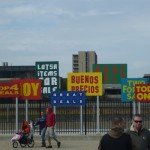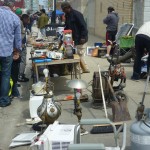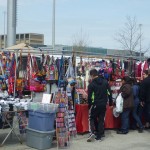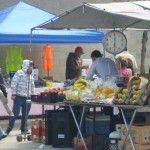In my last post, I explored the history and economic heart of the Maxwell Street Market. As a business area that served many of the city’s marginalized populations, Maxwell Street Market became culturally significant, too.
Street musicians and buskers developed their own take on Chicago blues. You can hear this style on albums as well as in documentaries on Maxwell Street. For examples, check out my Maxwell Street Market movies and books list.
A great way to find out more about the cultural significance of Maxwell Street is by reading oral histories from the people who lived, worked and shopped there, and who fought to save the area from urban renewal. Carolyn Eastwood's Near West Side Stories is the best example of this genre. She reports the stories of four people who shaped and were shaped by Maxwell Street: an Italian activist who battled the building of University of Illinois at Chicago campus, an African American owner of a deli that served Jewish cuisine, a Jewish owner of a suit and apparel store, and a Mexican American activist who fought against the closing of the market and community church.
In the 1990s, the University of Illinois at Chicago wanted to expand, discontinue the market, and re-develop buildings and land surrounding the market’s area. The Maxwell Street Market Area report noted that the Great Chicago Fire had missed the area and thus the buildings were very old and vacant.
After an outcry from the community and users of the market, the city designated Canal Street as the market’s new location. As with the South Water Street Market, the name of the market did not change after relocation. Today, Maxwell Street Market runs every Sunday and is still home to produce stands and apparel vendors, and is the place to buy things you didn’t know you needed.








Add a comment to: Maxwell Street Market Today